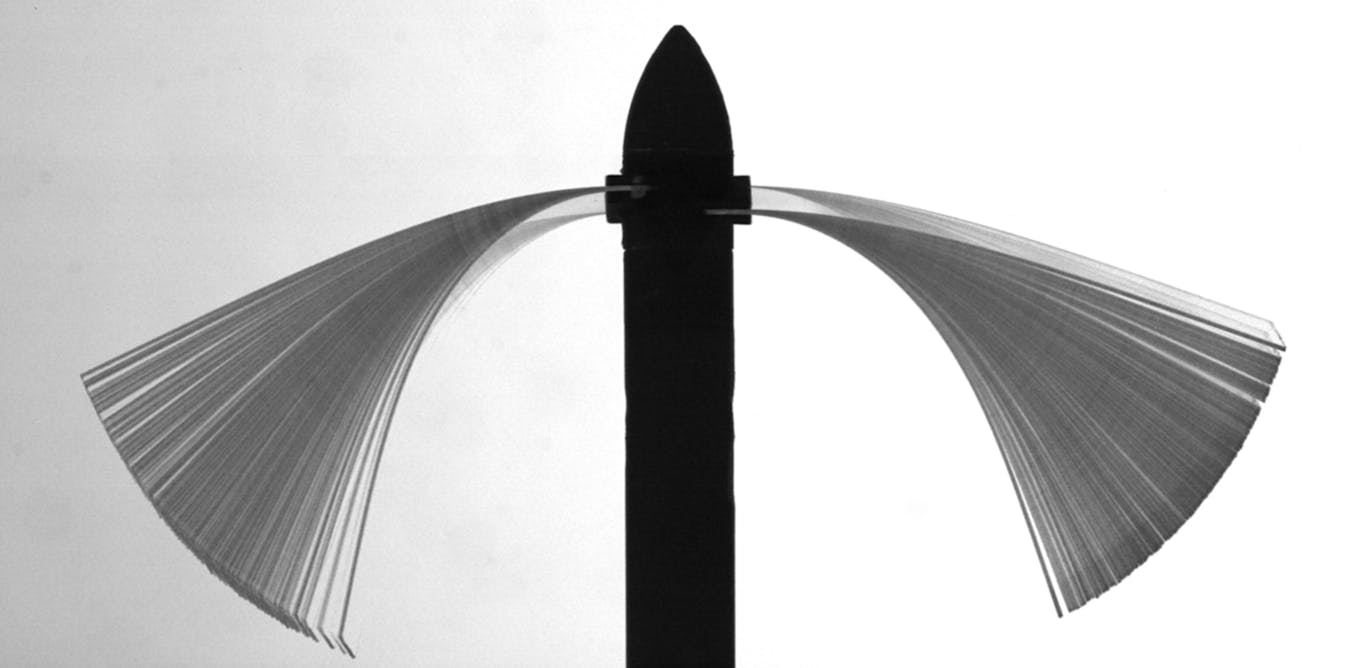
This picture shows the severe deformation of a small rotor with two flexible blades, when operating in water.
Rotors, or bladed fans, are used in many applications to exchange energy between the mechanical system (vehicle, turbine) and surrounding fluids (such as air or water). They use two main methods of operation. In the first case, the fluid is accelerated to generate thrust (for a helicopter or boat) or lift force (for a helicopter or drone). In the other mode, the fluid is slowed down, and its extracted kinetic energy is converted into another form, for example into electricity in the case of wind or tidal turbines.
The interaction between the fluid and the rotor generates reaction forces on the blades. If these blades are made of a flexible material (such as plastic for drones), or if they are very long (such as helicopters or wind turbines), can deform, affecting the performance of the rotor.
These distortions can reduce their effectiveness if the geometry of the blades deviates from the optimal shape, which is often determined by assuming that the rotor is solid and does not deform. In other cases, flexibility can be an advantage, allowing the rotor to automatically (passively) adapt its shape to the different flow regimes it may be exposed to. This possibility has been explored in several Recent Studiesis particularly interesting for rotors of small size (for example those of drones), for which it is impossible to install complex mechanical adaptors, similar to those found in large rotors of wind turbines or helicopters.
Deformations of the elastic blades can be quite large for a rotor operating in a fluid, since the forces exerted by the fluid are proportional to its density – that is, water is about 850 times greater than the density of air.
deformations under pressure
The above image was acquired during pilot study It aims to investigate the behavior of a small rotor (17.6 cm in diameter) with two rectangular blades of flexible polyethylene, rotating in the flow of water. Depending on the rotor speed, which is determined by its rotation frequency, the velocity of the falling flow and the inclination of the blades, significant distortions in amplitude may appear. In the present case, the rotor was spinning at 10 Hz in a water flow at 18 cm/sec, directed from top to bottom on the image.
The image shows an overlay of 200 individual images taken during the rotation of the rotor, when the blades were aligned perpendicular to the direction of view. Demonstrates large capacitance distortions of the blades, due to the pressure forces exerted by the fluid. The fan effect of the overlays also shows that these distortions vary over time; Its breadth covers a wide spacer given by the fan ends.
Studying these surprising behaviors observed in extreme blade operating systems may lead to new ideas for designing rotors in applications such as tidal turbines Or underwater drones or water/air hybrid.
This image is one of the winners of the Mécapixel 2021 contest.






